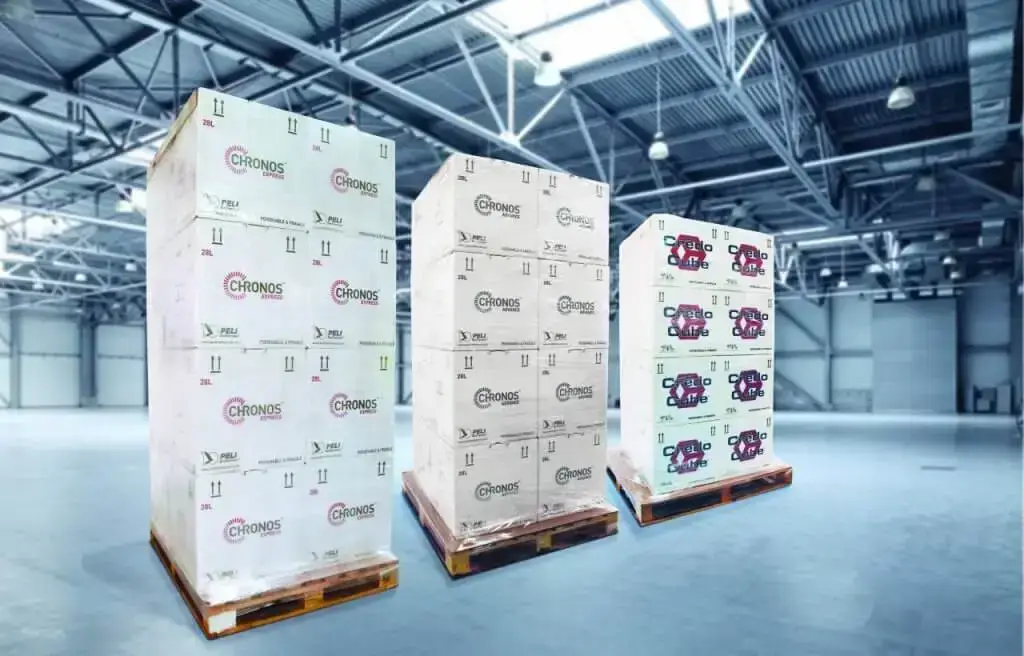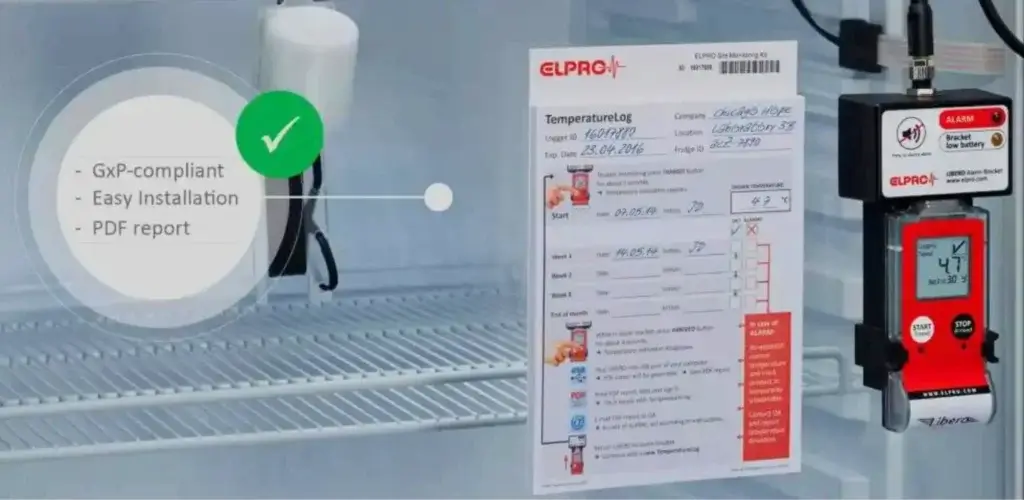
The pharmaceutical industry is gradually realizing that increased trial costs and drug failures have led to a commensurate need for more stringent controls and processes in order to protect the few successes from being further jeopardized. In the past, unanticipated problems have caused medications to fail in specific temperatures and climates even after they have reached the manufacturing stage.
Furthermore, a product batch’s “acceptable loss” is decreasing as a result of these declining returns. This implies that the condition of medications in transit needs to be given more consideration, and that ongoing technological and procedural development is essential. Cold chain processes have become increasingly important as the issues grow.
The cold chain system, which offers a controlled and closely supervised approach to managing temperature and humidity issues in production and transportation, enables sensitive compounds to be transported across continents without experiencing product loss or damage from heat, humidity, or other environmental factors.
Innovation and inventiveness have expanded dramatically as a result of the cold chain market expansion and the heightened attention from regulators. The top 10 pharmaceutical businesses lost $16 billion worth of goods annually, which is 20 times the average price-to-earnings ratio of pharma companies, according to analysts at IMS Health in 2014. These losses were caused by delays, temperature excursions, and shipping issues. Losses topped $35 billion for the pharmaceutical industry as a whole.
We decided to examine some of the most recent innovation in the significant industry and the efforts being made to enhance the Cold Chain Procedures
What Is ‘Cold Chain’?

The term “cold chain” or “temperature controlled” shipping describes the full procedure for safeguarding, keeping, and moving prescription drugs within a predetermined temperature range. The procedure makes use of cooling systems to guarantee that humidity and product integrity are maintained at all times, along with temperature constraints. Cold chain procedures in the pharmaceutical industry follow Good Manufacturing Practices (GMP), a set of guidelines that are upheld by regulatory agencies. This implies that they cannot permit any adverse effects on the efficacy, safety, or quality of medications.
Cold chain offers businesses in the pharmaceutical industry significant advantages. Nowadays, many more biological products can be transported to any location in the world, including vaccines. The majority of these are temperature-sensitive and still in the early phases of development. These could lose their effectiveness or potentially endanger patients if they are compromised during shipment, as has happened on multiple occasions in the past.
Over the past few years, the cold chain business has experienced remarkable growth. This is closely related to changes in the pharmaceutical industry. The industry values pharmaceuticals that need to be transported and stored chilled at a cost of about $295 billion. The worldwide cold chain market expanded at a compound annual growth rate (CAGR) of 9.2% from $270.55 billion in 2022 to $295.42 billion in 2023.

Current Innovation in Cold Chain Procedures
Globalisation

Recently, several solutions have been proposed to address the growing globalization of manufacturing and shipping. These can guarantee that the cold chain operation’s temperature is regulated from beginning to end.
In the Middle East and Africa, Cold Chain Packing ® is the only recipient of the Envirotainer Ground Services Award. Cold Chain Packing staff are skilled Envirotainer specialists, who work out of Riyadh (RUH) and Jeddah (JED), and are equipped with the necessary training to guarantee that your active container is managed as efficiently as possible.
They offer specialized monitoring for active containers and re-ice and battery changes for your Envirotainer T2 containers, all thanks to their strategic partnerships with Saudi Arabian airlines. They guarantee that container check papers are filled up correctly and, if feasible, offer images for auditing.
Integrity in Packaging and Shipping

Cold chain innovation in recent times has placed a lot of emphasis on packaging. Newer methods, which avoid cross-contamination, include active temperature control, reusability, and enhanced cleaning techniques. These methods replace more traditional treatments like dry ice.
Pharmaceutical businesses are moving to Pelican BioThermal for reusable and single-use temperature-controlled packaging, along with other organizations hoping to achieve major cost and quality benefits in their cold chains.
The new technology safeguards both the environment and your cargo with a passive, reusable temperature-controlled shipper. lowering your carbon footprint and expenses while maintaining the ideal temperature for your most important medical supplies for up to five days. This new technology is called Credo Cube and it offers a variety of sizes, from 3 to 96 liters, and temperature options, such as controlled ambient temperature, chilled, and deep frozen. These robust, portable temperature-controlled packing systems are perfect for lowering transportation costs or in case of unforeseen delays. High performance phase change material (PCM) for the coolant and vacuum insulated panels (VIPs) for the best insulation are used in their construction.
Information and Technology

Data loggers for tracking package information are getting more precise and comprehensive in order to guarantee consistency and accuracy during transportation. Many of the most recent trackers use lithium metal or lithium ion batteries, even though they can sense temperature, position, orientation, humidity, pressure, and other parameters. These are categorized as dangerous items, and when transported by air, they have to adhere to certain rules. Since this restriction can limit the usage of trackers in the future, efforts are being made to find alternate power sources.
Soon, stakeholders will be able to view additional data in real time thanks to the implementation of 7P GPS advance tracking. More vehicle-to-vehicle connections may also be possible with it, which is a crucial technological advancement as the globe transitions to autonomous systems. The new GL300W is the inventive gadget. Its potent GNSS locator is intended for asset, vehicle, and lone worker tracking applications. Applications that need to set geo-fences based on current position on a regular basis or that require quick emergency alarm notification are perfect for this device.
Particular Temperature Requirements

More comprehensive temperature requirements have resulted from the proliferation of novel medications during the past few years, including biologics and personalized treatments. “Body temperature” and ultra-frozen goods at or below -80 degrees Celsius are among the requirements.
Semi-active packaging is a popular packaging option that is practical for short distances and reasonably priced. However, it is not self-regulating and frequently has a single use, which harms the ecosystem.
Although they are more expensive, newer methods are much more practical. The majority provide stable storage conditions with long-term temperature control and special engineering. Phase-change materials are one example of an innovation that provides five to seven times the efficacy of previous options.
Companies are progressively equipping newer shipping gadgets with GPS technologies and tracking systems for advanced monitoring and data-logging. These frequently have shutdown features to allow for safe flying as well as real-time tracking of a package’s location, temperature, and humidity.
One of these inventions is the ELPRO LIBERO. It will either integrate the temperature data into your ERP or monitor your worldwide cold chain shipments in a central database on the cloud. The data logger automatically generates a PDF report at the destination that summarizes the temperature exposure during shipment.
One of our best-selling items is the LIBERO CL, a multifunctional PDF logger with multiple levels and uses that has an integrated temperature sensor and interfaces via USB and Bluetooth®. It may be used for site and storage conditions monitoring in addition to shipment tracking. With a temperature range of -30 °C to +70 °C, the internal temperature sensor is extremely precise and has a 100% sensor calibration. Up to eight temperature alarm zones are supported, along with MKT and duration as alarm criteria, the ability to turn the alarming feature on and off again, and the ability to enter shipment-specific data. With a battery life of up to three years, LIBERO CL has the capacity to store up to 75,500 temperature readings. Use the handy USB interface to obtain the PDF report, or use the logger’s Bluetooth® interface to download the PDF to your smartphone using the LIBERO Cx BLE app, which is compatible with iOS and Android.
Personnel

Technology by itself won’t be the solution to the cold chain issue. Logistics organizations are being forced to become specialists themselves as a result of the demands made by pharmaceutical businesses, which are becoming more and more sophisticated and specialized. Increasingly shipping companies are growing adept at customizing options for individual businesses or goods instead of sticking to the more general strategy of offering pre-made shipping packages.
This additional flexibility covers the whole range of a shipping company’s operations. Pharmaceutical firms are becoming more and more prepared for a variety of transportation choices and technological options in the event of a supply chain disruption or natural disaster.
Employee roles are also evolving. The hundreds of employees and workers needed to manage the cold chain process must adhere to best practices; they must all comprehend the requirements for packages and the proper protocols to guarantee that regulations are never broken.
Cold Chain Packing® will collaborate with your team to create affordable end-to-end solutions for your requirements, whether you are a manufacturer trying to identify and reduce risks in any of the Critical Control Points in your distribution chain or a logistics provider hoping to support the healthcare industry through GDP compliance.